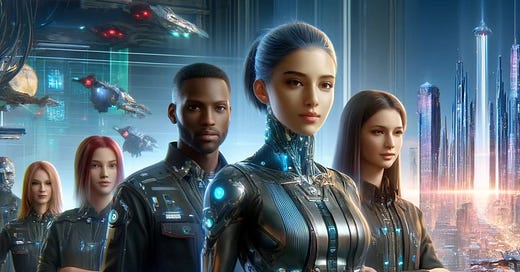Since ChatGPT’s breakthrough release in November 2023, the conversation around artificial intelligence (AI) has shifted dramatically. What was once widespread fear — “AI is going to take my job” — has evolved into a more nuanced reality: AI is “doing more”, but it's not replacing humans outright. Instead, it’s fundamentally changing how work is done, particularly in knowledge-based professions. We're entering a phase where "human-in-the-loop" systems are not just desirable—they’re essential.
Take, for instance, the role of a “tax accountant” or “IP attorney”. These are fundamentally technical professional jobs. In a pre-AI world, tax professionals and IP attorneys would manually sift through hundreds of documents, spreadsheets, files and receipts, applying their expertise line-by-line. Today, large parts of that workflow—searching, data extraction, classification, reconciliation, and even initial filing suggestions—can be automated using machine learning models and task-specific agents. But the job hasn’t vanished; it’s transformed. Tax accountants and IP attorneys now review, verify, and advise based on AI-generated results. They apply judgment, context, and domain expertise that today’s AI systems still cannot replicate.
This evolution represents a broader paradigm shift from “manual workflows” to AI-augmented workflows:
Manual Workflow: Linear and repetitive – like a conveyor belt, and often reliant on domain heuristics. (These are “rules of thumb” which are really useful for problem-solving, fixing things, analyzing situations, etc. For example, a sore throat and blushing means you have a cold.) Human operators manage every step.
AI-Augmented Workflow: Nonlinear, parallelizable, and adaptable. AI agents perform large-scale data processing, predictions, and initial actions. Humans intervene in order to supervise, correct edge cases, and make decisions requiring human judgment.
Despite this progress, there’s a growing discontent in the workplace—especially around the current generation of AI agents. It’s as if an otherworldly presence has entered our work lives—one that we now have to adapt to and coexist with.
What’s more, the gap between “promise” and “delivery of functionality” is glaring and more than a mild irritant. For example:
Autonomous Agents: Struggle with memory, context switching, and completing multi-step tasks without human help.
Customer Support Bots: Fail at nuance, context retention, and often frustrate users; need human backup.
AI Coding Tools: Good for boilerplate but requires heavy developer review and have many other technical shortcomings.
Legal/Finance AI: Misses contract/tax nuances, lacks domain judgment, and needs expert oversight.
Multimodal Models: Impressive demos but still hallucinate and misinterpret images or diagrams.
AI for Decision Making (HR, Risk): Often biased, lacks transparency, and needs human checks for fairness and accuracy.
AI for marketing and media tout autonomous agents capable of end-to-end tasks with minimal supervision but rarely deliver on promise.
In practice, most AI agents still struggle with persistent state, context retention, edge cases, and real-time feedback integration.
Enterprises that buy into the hype often face brittle implementations that require significant human intervention to maintain stability and accuracy.
The issue lies not in ambition, but in implementation maturity. Today’s agents are excellent at narrow tasks: summarizing reports, extracting structured data, generating code snippets, and handling customer queries. However, the dream of autonomous, general-purpose agents handling complex workflows end-to-end—across real-world, multi-modal inputs—is still in the early innings.
That’s why "human-in-the-loop" AI is not just a transition state—it’s a design principle. Incorporating human judgment, oversight, and feedback is not a flaw; it’s a necessity for scalable, trustworthy systems. The most successful AI deployments treat automation not as a replacement for labor, but as a “force multiplier”.
What Comes Next?
What’s next is likely a wave of innovation around agent infrastructure, including:
Persistent memory & context chaining for agents that operate over long sessions or complex workflows.
Declarative goal-setting where users define outcomes, and agents dynamically plan and revise steps.
Integrated feedback loops where human corrections are fed back into model fine-tuning or system configuration.
Transparent observability tools for monitoring agent behavior, ensuring security, and validating correctness.
In the near term, success won’t come from eliminating humans from workflows—it will come from empowering them with intelligent, adaptive tools. The question isn't whether AI will take your job. It’s whether you’ll be the person who knows how to work with AI, or the one trying to compete against it.
Conclusion
AI isn’t replacing the workforce—it’s rewiring it. The tools we’re building today are not autonomous replacements, but collaborative partners that reshape how work gets done. As AI continues to evolve, those who learn to harness it—not just tolerate it—will lead the next wave of innovation. The future of work belongs not to the machines, but to the humans who know how to work alongside them.




